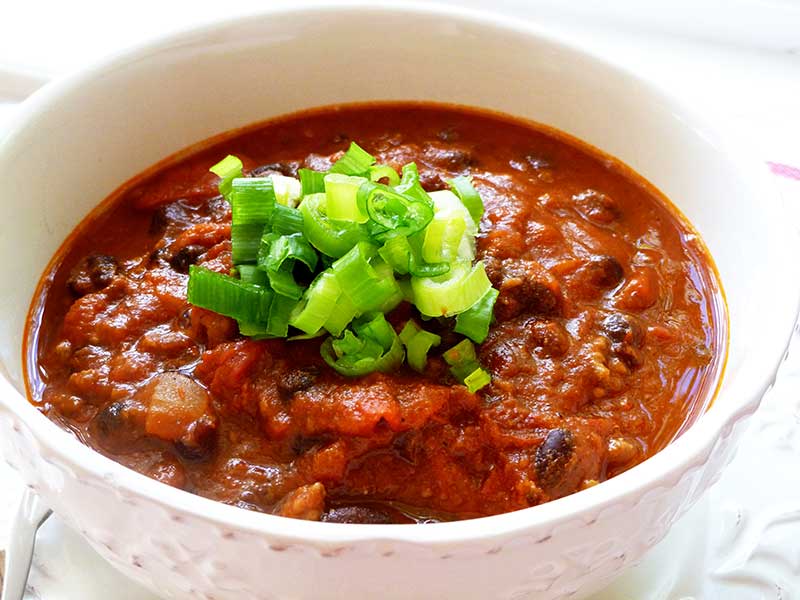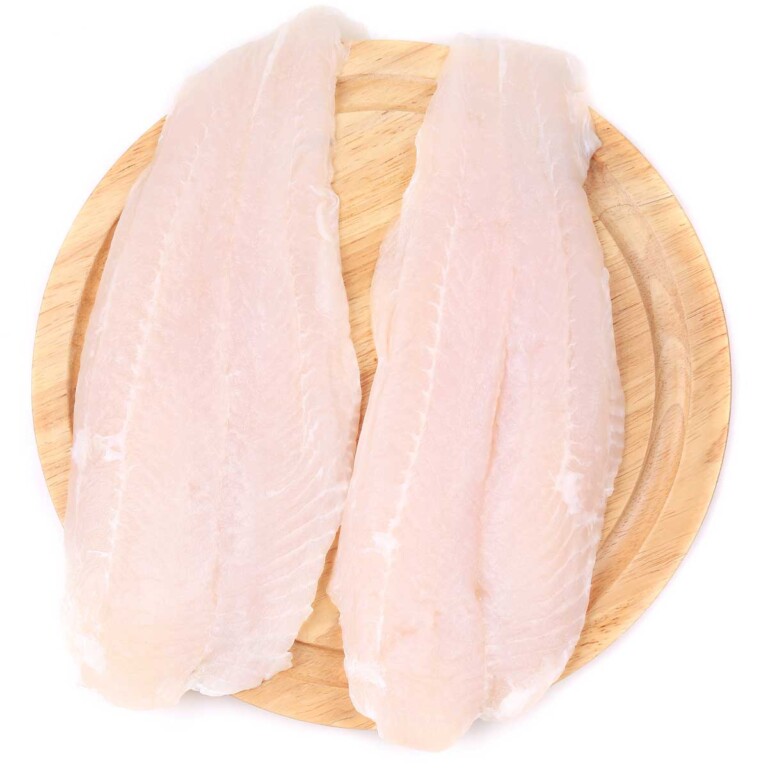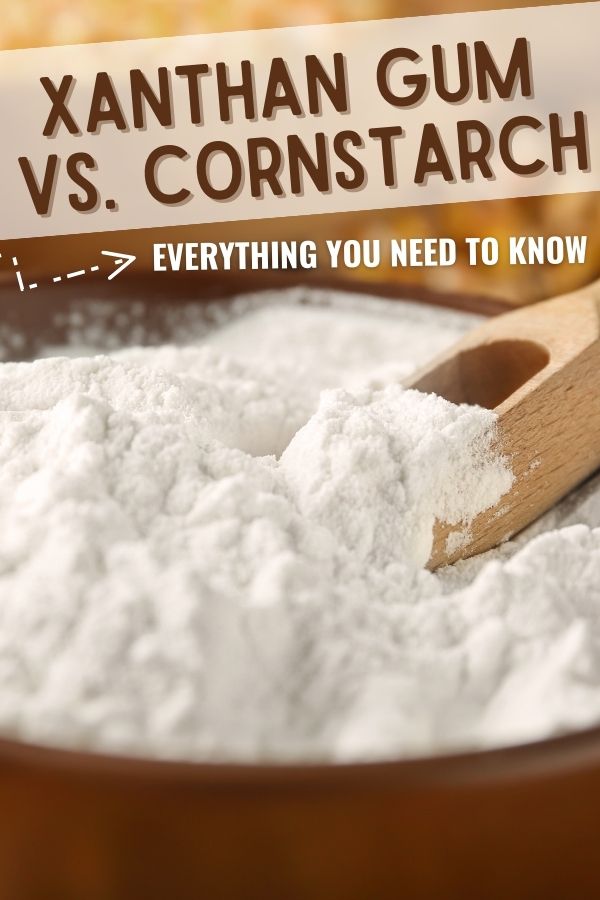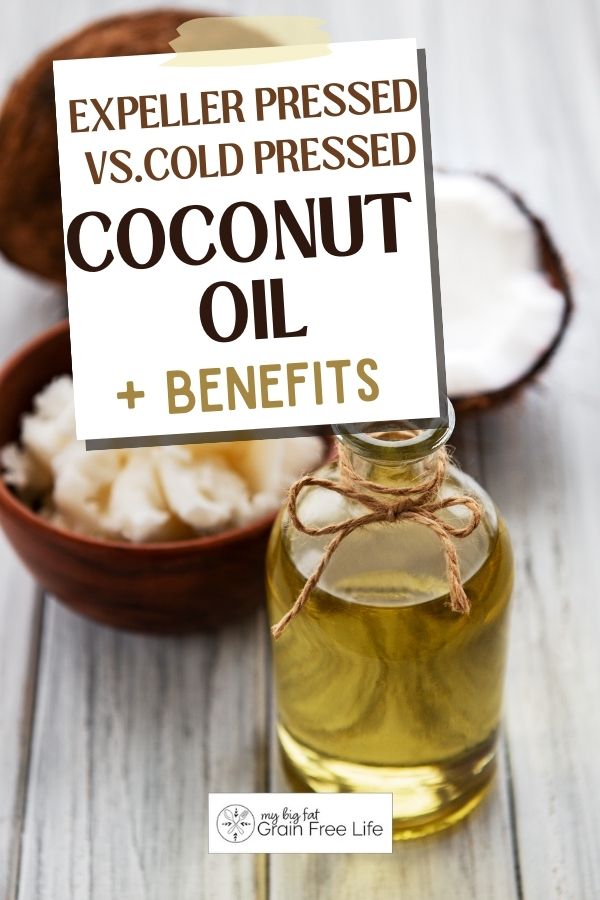Pinto Beans vs Black Beans: Everything You Need to Know
This post may contain affiliate links. If you make purchase after clicking a link, I may receive a commission at no extra cost to you.
Last Updated on November 8, 2023
To help you understand the differences between pinto beans vs black beans, we’ve broken it all down for you. We’ll compare flavor, appearance, nutrition, and cooking. You’ll also learn how to soak and cook them.

Pinto vs Black Beans
There are hundreds of different types of beans, and two of the most popular are pinto beans and black beans. These beans have some similarities, but they are often used in different ways, depending on the dish.
Pinto Beans
Pinto beans, also known as speckled beans, are a type of legume that are native to Mexico and Central America but are now grown in various regions across the world.
What Are Pinto Beans?
Pinto beans get their name from their mottled appearance, with beige or tan spots on a pinkish background resembling painted canvases (pinto means painted in Spanish). In addition to pinto beans, they may also be referred to as frijoles pintos in Spanish-speaking countries.
These nutritious legumes thrive in warm climates and can be found growing primarily in the United States (particularly Texas), Mexico, Brazil, China, India, and many other countries.

Flavor of Pinto Beans
Pinto beans have a mild, earthy flavor with a slightly nutty undertone.
Texture of Pinto Beans
When cooked, pinto beans develop a creamy texture and absorb the flavors of other ingredients in dishes such as soups, stews, or chili.
Pinto Beans Nutrition
A one-cup serving of pinto beans (approximately 171 grams) provides around 245 calories while being low in fat. They are an excellent source of plant-based protein, offering about 15 grams per serving.
Pinto beans are also rich in dietary fiber which aids digestion and helps maintain bowel regularity.
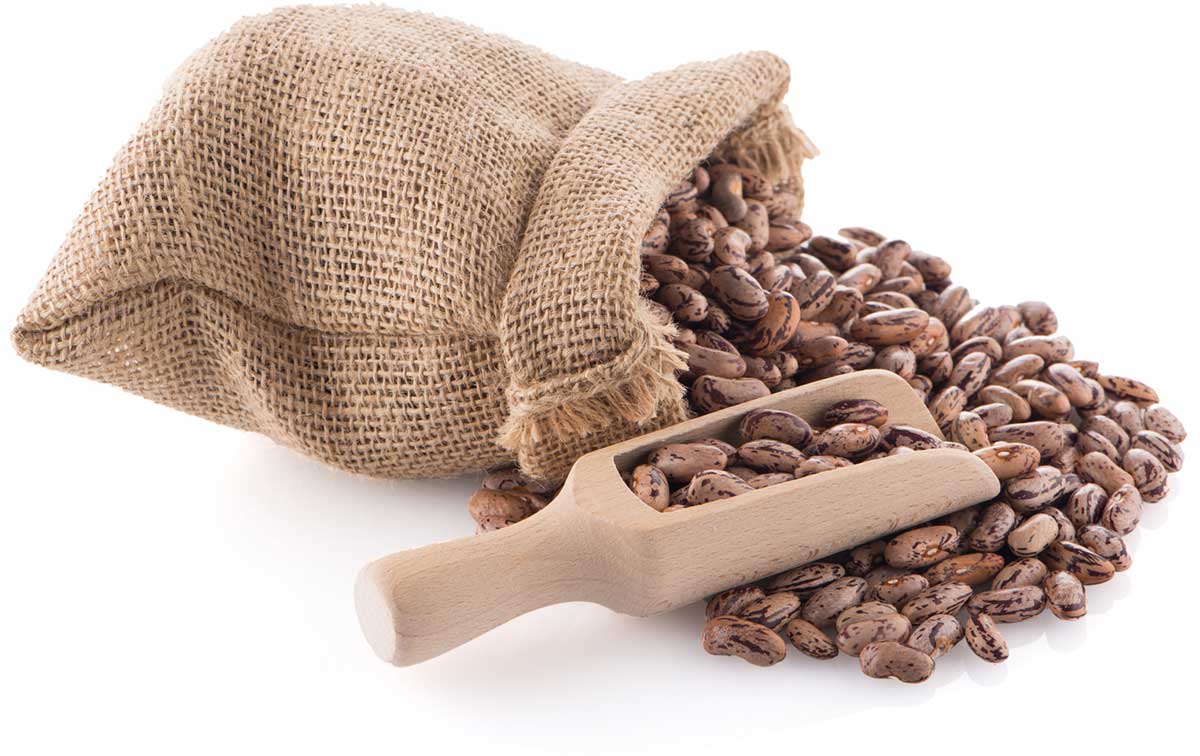
Health Benefits of Pinto Beans
In addition to their high protein and fiber content, pinto beans offer several health benefits.
The combination of complex carbohydrates and fiber promotes steady blood sugar levels, making them suitable for individuals with diabetes or those looking to manage their blood glucose levels effectively.
Pinto beans contain essential vitamins like folate (which is crucial during pregnancy), thiamine (B1), riboflavin (B2), niacin(B3), pyridoxine(B6), vitamin E , K along with minerals such as iron , magnesium , potassium. These nutrients support overall health by contributing to energy production, immune function, and bone density health.
Black Beans
Black beans, also known as black turtle beans or frijoles negros, are a popular legume that originated in Central America.
What Are Black Beans?
In North America and some English-speaking countries, they are commonly referred to as black beans due to their dark color when cooked. Black beans are often called frijoles negros or caraotas negras in Latin America and the Caribbean. In Spanish cuisine, you may find them listed as judías negras or habichuelas negras.
Black beans can be found growing in many parts of the world including Central and South America, Mexico, Africa, Asia, and even certain regions of Europe.
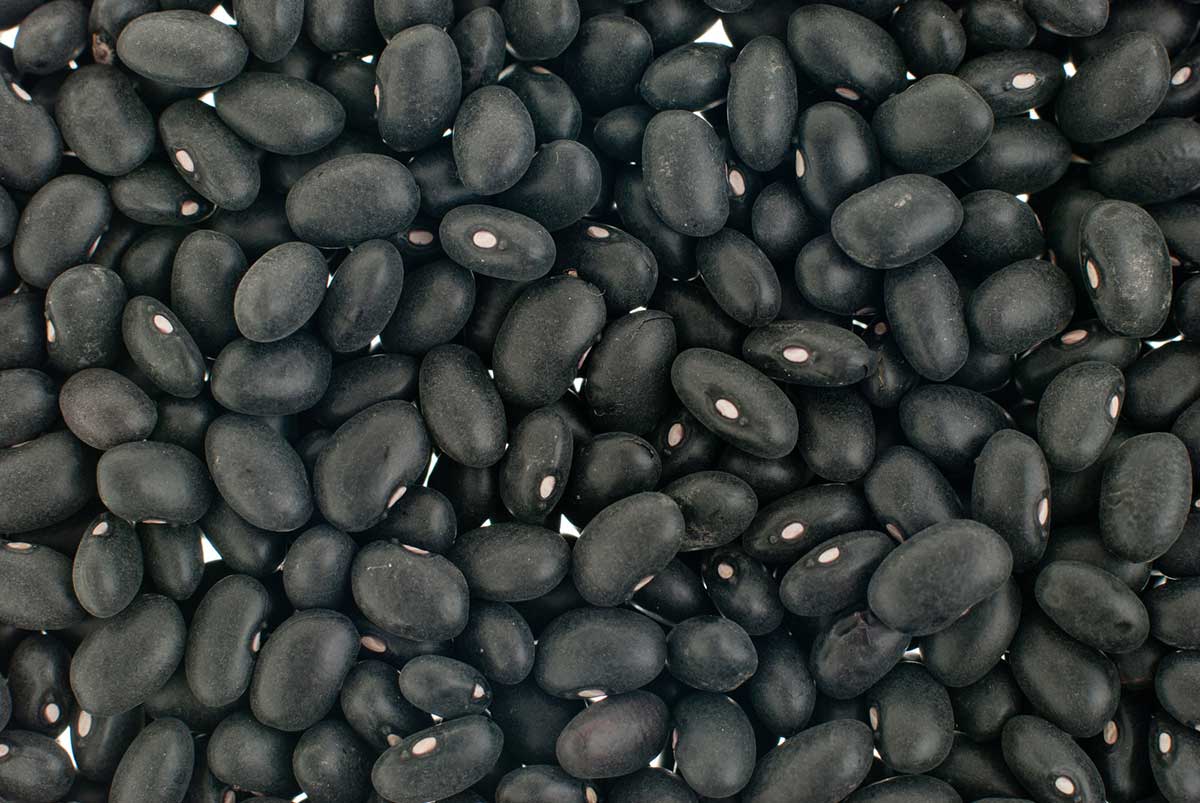
Flavor of Black Beans
These small, shiny black beans have a mild, earthy flavor. They absorb flavors well and can be used in various dishes.
Texture of Black Beans
When cooked, black beans offer a slightly creamy texture, however they are more firm than pinto beans.
Black Beans Nutrition
Black beans are packed with essential vitamins and minerals. A one-cup serving provides approximately 15 grams of protein, making them an excellent plant-based source of this important nutrient.
They are also high in dietary fiber, offering around 15 grams per cup. This fiber content aids digestion and helps maintain healthy cholesterol levels.
Additionally, black beans contain valuable antioxidants such as anthocyanins which contribute to their dark coloration. These antioxidants help protect the body against oxidative stress caused by harmful free radicals.

Health Benefits of Black Beans
The combination of protein and fiber makes black beans particularly satiating, helping you feel full for longer periods and aiding weight management efforts. Their low glycemic index also means they release energy slowly into the bloodstream, providing sustained fuel throughout the day.
Black Beans Vs Pinto Beans: Appearance
- Black beans: These small legumes have a dark black color with a shiny skin.
- Pinto beans: Pinto beans are larger than black beans and feature a mottled beige or pinkish-brown color with speckles.
Black Beans Vs Pinto Beans: Flavor Comparison
- Black Beans: They have an earthy flavor with hints of mushroom-like undertones.
- Pinto Beans: Pintos have a slightly nutty taste that becomes creamier when cooked.
Acidity of Black Beans and Pinto Beans
- Pinto beans are found on our alkaline food chart and are less acidic than black beans.
- Black beans are considered acidic.
Black Bean Vs Pinto Bean: Nutrition
Both black beans and pinto beans are highly nutritious superfoods and provide several essential nutrients such as protein, fiber, vitamins, and minerals. Here is a general overview:
- Protein: Both types of beans are excellent sources of plant-based protein.
- Fiber: Both pinto beans and black beans contain significant amounts of dietary fiber.
- Vitamins: Black beans tend to have higher levels of folate (vitamin B9) compared to pinto beans.
- Minerals: Pinto Beans generally contain more iron compared to black bean varieties.

Pinto Vs Black Beans: Best for Cooking
- Rice and Beans: Both black beans and pinto beans can be used effectively in rice and bean dishes. Black beans have a slightly sweeter flavor with a firmer texture compared to pinto beans. Pinto beans tend to be creamier when cooked.
- Chili: Both black beans and pinto beans are commonly used in chili recipes. Black beans provide a bold earthy flavor while maintaining their shape well during cooking. On the other hand, pinto beans have a milder taste that complements the overall spiciness of chili dishes nicely.
- Soups and Stews: Black beans work well in hearty soups or stews due to their ability to hold up under longer cooking times without becoming mushy. Pinto beans also work equally well but may become softer during prolonged simmering.
- Nachos: Both black beans and pinto beans can be delicious options for nachos. Black beans offer an intense earthy taste which pairs beautifully with spicy ingredients like jalapenos. Pinto beans, on the other hand, tend to be milder tasting and provide a subtle flavor that can complement cheese and salsa notes on the nachos.
- Enchiladas: Black beans have a nice flavor that adds depth to the dish while maintaining their texture within the enchilada. Pinto beans, on the other hand, offer a milder taste that blends well with other ingredients and can provide a creamier consistency.
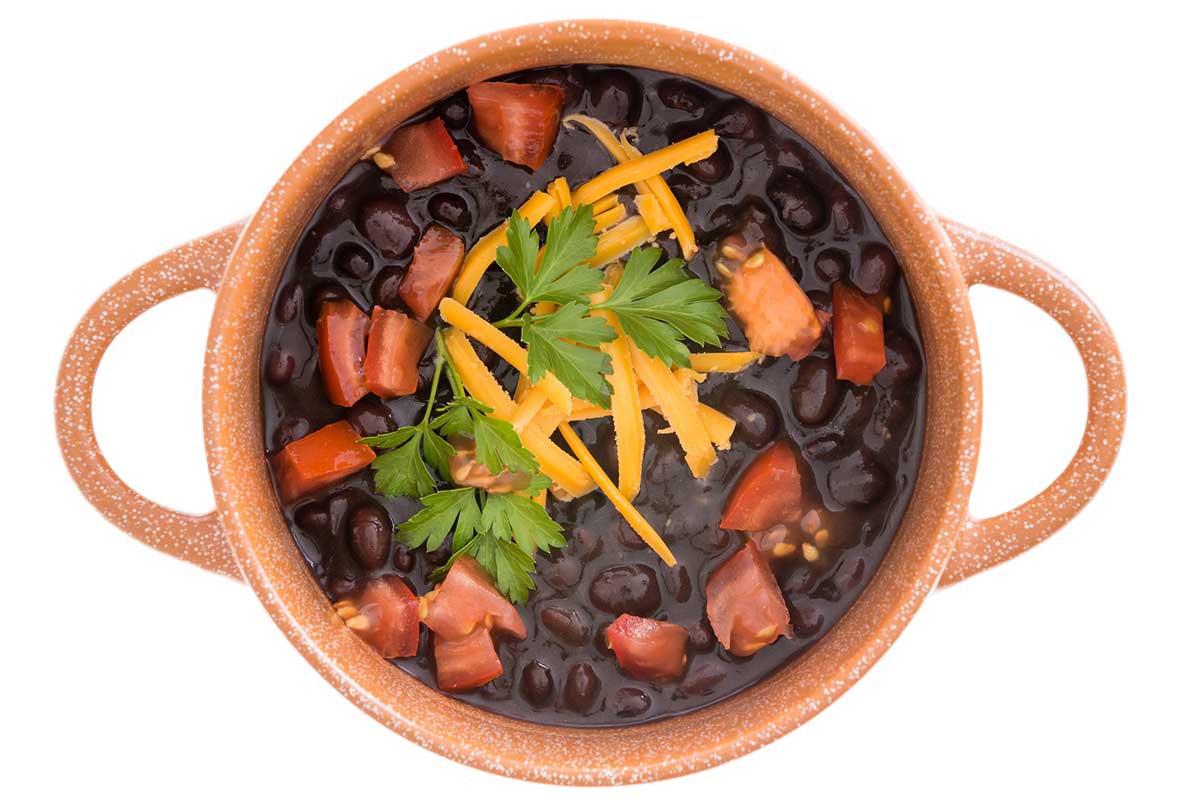
Refried Beans Comparison Using Black and Pinto Beans
Refried beans can be made with either pinto beans or black beans, and the choice between the two ultimately depends on personal preference. Let me explain how refried beans taste using each type of bean individually.
Refried Pinto Beans
When cooked and mashed, pinto beans create a creamy texture with a slightly nutty flavor. Refried pinto beans have a rich and earthy taste that pairs well with various seasonings such as cumin, garlic, and chili powder. The resulting dish is smooth in consistency but still maintains some texture from the skins of the beans.
Refried Black Beans
When turned into refried beans, black beans become velvety and smooth while retaining their unique flavors. Refried black beans tend to be slightly sweeter than those made from pinto beans and pair well with spices like cumin, smoked paprika, or chipotle peppers.
As you can see from the photos below, black beans have a purple hue when made into refried beans, whereas pinto beans have the traditional refried bean color you might be used to seeing.

Black Beans Vs Pinto Beans: Cuisines
While oftentimes black beans and pinto beans are interchangable in recipes, there are some traditional dishes that use one over the other.
Pinto Beans
- Mexican cuisine: Pinto beans are a staple ingredient in traditional Mexican recipes such as refried beans, frijoles de la olla (pot beans), and chili con carne.
- Southwestern cuisine: In Southwestern cuisine, which encompasses regions of the United States influenced by Mexican flavors, pinto beans are also widely utilized. From Tex-Mex burritos and enchiladas to New Mexico’s famous green chile stew, pinto beans play an essential role in adding depth and richness to these dishes.
- Caribbean cuisine: In countries like Cuba and Puerto Rico, pinto beans are often cooked with rice to create classic dishes like Moros y Cristianos or Arroz con Gandules.
- Brazilian cuisine: Pinto beans are incorporated into Brazil’s traditional feijoada dish – a rich black bean stew made with pork cuts – where it adds another layer of flavor complexity alongside other ingredients such as sausage and bacon.
Pinto beans are tasty alongside my AIP pulled pork (AKA Carolina pulled pork)
Black Beans
- Latin American cuisine: Black beans have deep roots in Latin American cooking, especially in countries like Mexico, Brazil, Cuba, and Colombia. In these regions, black beans are often cooked with spices like cumin, garlic, and onions to create hearty stews or soups such as feijoada or frijoles negros.
- Caribbean cuisine: Black beans feature prominently in Caribbean dishes as well. From Puerto Rico to Jamaica and the Dominican Republic, you’ll find black beans used in traditional recipes such as rice and peas (which is actually made with pigeon peas) or moros y cristianos (a dish combining rice and black beans).
- Tex-Mex cuisine: The fusion of Mexican and Texan flavors has given rise to Tex-Mex cuisine which frequently incorporates black beans into its recipes. Think of classic dishes like enchiladas, burritos, tacos or nachos where black beans provide texture along with other ingredients.
- Brazilian cuisine: Black beans take center stage in popular dishes like feijoada – a flavorful stew made from pork cuts accompanied by rice – considered by many as the national dish of Brazil.
- Cuban cuisine: Cuban food also relies on the versatility of black beans for creating delicious meals such as arroz congri (black bean rice), ropa vieja (shredded beef stew), or picadillo (ground beef hash). These dishes showcase how well-black beans complement other ingredients.
Try my Black Bean Chili!
Pinto Vs Black Beans: Best for Digestion
Do you wonder if black or pinto beans easier to digest? While individual responses may vary based on personal tolerance, both black beans and pinto beans are known for their potential to cause gas or bloating.
However, soaking dried beans before cooking and gradually increasing consumption can help improve digestion.
Pinto Vs Black Beans: Best for Health Benefits
Both types of beans offer various health benefits due to their nutrient profile:
- Heart Health: The high fiber content in both types can help lower cholesterol levels, reducing the risk for heart disease.
- Blood Sugar Control: The low glycemic index value makes these legumes suitable for individuals managing blood sugar levels effectively.
- Weight Management: Thanks to their high fiber content combined with protein richness they can promote feelings of fullness leading to better weight management.
Different Ways of Cooking Black Beans and Pinto Beans
There are three main methods of cooking dried black beans and dried pinto beans:
Boiling Dried Beans
- After soaking for 8-12 hours, rinse the dried beans under running water to remove any dirt or debris.
- Place the rinsed beans in a large pot and cover them with enough filtered water. The water level should be about 2 inches above the beans.
- Bring the water to a boil over high heat.
- Once it starts boiling, reduce the heat to low and let it simmer for about 60-90 minutes until the beans are tender but not mushy. You can check their doneness by tasting them.
- If needed, skim off any foam that forms on top during cooking.
- Drain and rinse the cooked beans before using them in your recipe.
Pressure Cooking Dried Beans
- After soaking for 8-12 hours, rinse the dried beans under running water to remove any dirt or debris.
- Place the rinsed beans in an electric pressure cooker, like an Instant Pot or stovetop pressure cooker.
- Add enough water to cover the beans completely. Follow your pressure cooker’s guidelines for minimum liquid requirements.
- Close and lock the lid of your pressure cooker securely following its instructions.
- Set your electric pressure cooker according to manufacturer’s recommendations or if you’re using a stovetop pressure cooker, bring it up to full pressure over medium-high heat until you hear a steady hissing sound or see steam escaping from its valve at regular intervals (consult your specific model’s manual).
- Cook for around 20-30 minutes at high-pressure settings depending on desired tenderness. Refer to specific recipes for exact timings if available.
Slow Cooking Dried Beans
- After soaking for 8-12 hours, rinse the dried beans under running water to remove any dirt or debris.
- Place the soaked and drained beans into your slow cooker.
- Add enough fresh water or chicken broth (about 2 inches above the level of the soaked beans) along with any desired seasonings or aromatics like granulated garlic (or fresh garlic), bay leaves, etc., if desired.
- Cover with lid and cook on low heat setting for about 6-8 hours until tender but not mushy. Taste for tenderness and adjust time accordingly.
If you have some fresh or dehydrated jalapenos, they can flavor up your beans with a spick kick!
How to Store Dry Black Beans and Pinto Beans
To store dried black beans and pinto beans properly, follow these steps:
- Sort: Before storing the beans, make sure to remove any debris or damaged beans. This will help prevent spoilage.
- Container: Transfer the dried beans into airtight containers such as glass jars, plastic bags with zip locks, or food storage containers with tight-fitting lids.
- Labeling: Clearly label each container with the type of bean and date of storage. This will help you keep track of their freshness.
- Storage location: Store your dried black and pinto beans in a cool, dark place away from direct sunlight and heat sources like stoves or radiators.
- Shelf life: Dried black beans can be stored for up to 1-2 years if properly stored, while pinto beans have a slightly shorter shelf life of about 6 months to 1 year.
How to Soak Beans
It’s important to soak dried beans to remove some of the lectins and make them easier to digest. To properly soak dried black beans and pinto beans, follow these steps:
- Sort the beans: Spread the dried beans out on a clean surface and remove any debris or discolored ones.
- Rinse the beans: Place the sorted beans in a colander and rinse them thoroughly under cold water to remove any dirt or dust.
- Soak overnight: Transfer the rinsed beans to a large bowl or pot and add enough water to cover them completely. Allow them to soak at room temperature for up to 8 hours. If soaking overnight or longer than 8 hours, put the beans in the refrigerator to prevent them from fermenting. Alternatively, you can use the quick-soak method described in step 4 if you don’t have time for an overnight soak.
- Quick-soak method (optional): If you’re short on time, you can use this method instead of soaking overnight. Bring a large pot of water to boil, then add the rinsed beans and let them boil for 2 minutes. Remove from heat, cover with a lid, and let them sit in hot water for about 1 hour.
- Drain and rinse again: After soaking (whether overnight or using quick-soak), drain off the soaking liquid and give the soaked beans another thorough rinse under cold running water.
Should I Add Baking Soda When Soaking Beans?
When soaking dried beans, some people choose to add baking soda for a few reasons:
- Reducing cooking time: Adding baking soda to the soaking water can help soften the beans more quickly, reducing their overall cooking time.
- Improving texture: Baking soda can aid in breaking down the complex carbohydrates present in beans, which may result in a smoother and creamier texture after cooking.
- Enhancing digestibility: The addition of baking soda during soaking is believed to help reduce compounds called phytates and tannins found in beans that could interfere with digestion. This may make the beans easier on the stomach for some individuals.
While adding baking soda can have these benefits, it should be used sparingly as excessive amounts may alter the taste or lead to an undesirable texture.
You Might Also Want to Check Out:
- Beans Vs. Legumes: Nutritional Benefits and Differences
- 30 Amazing Health Benefits of White Beans (Nutrition Facts)
- Easy & Hearty Navy Beans with 5 Ingredients (GAPS, SCD)
Frequently Asked Questions about Black and Pinto Beans
Do I Have to Soak Dried Beans?
Yes, it is recommended to soak dried beans before cooking. Soaking helps to rehydrate the beans and reduce their cooking time. If you don’t soak dried beans before cooking, they will take longer to cook and may result in uneven texture. It can also lead to digestive discomfort as soaking helps remove some of the complex sugars that can cause gas and bloating.
Are Black Bean and Pinto Beans Good for You?
Both black beans and pinto beans are high in fiber, which is essential for digestive health and helps to keep you feeling full. The fiber content also aids in regulating blood sugar levels, making them especially beneficial for individuals with diabetes or those looking to manage their weight.
Additionally, both types of beans are rich in plant-based protein, making them a great alternative to meat for vegetarians or vegans.
Furthermore, black beans and pinto beans contain various vitamins and minerals that contribute to overall health. They are good sources of folate, iron, magnesium, potassium, and zinc. These nutrients play vital roles in energy production, bone strength, heart health, and immune system support.
Are Black Beans Better Than Pinto Beans?
Both types of beans are highly nutritious and offer various advantages.
- Black Beans: Black beans have a slightly higher fiber content compared to pinto beans. They also contain more antioxidants than pinto beans, which help protect the body against cell damage caused by harmful free radicals.
- Pinto Beans: On the other hand, pinto beans are an excellent source of folate, a B-vitamin that plays a crucial role in supporting brain function and preventing neural tube defects during pregnancy. Pinto beans also provide significant amounts of iron and potassium, which contribute to overall well-being.
In terms of taste and versatility in cooking, both black beans and pinto beans can be used in various dishes such as soups, stews, salads, or even as fillings for tacos or burritos.
What Takes Longer to Cook Black Beans or Pinto Beans?
When it comes to cooking time, black beans typically take longer to cook compared to pinto beans.
The reason behind this difference lies in the size and density of the two types of beans. Black beans tend to be smaller and denser than pinto beans, which means they require more time for proper cooking.
Sources
- https://www.purewow.com/wellness/what-is-the-alkaline-diet
- https://www.medicalnewstoday.com/articles/289934
- https://www.webmd.com/diet/health-benefits-black-beans
- https://www.canr.msu.edu/news/black-beans-and-rice-history-and-fun-facts
- https://www.healthline.com/nutrition/pinto-beans-nutrition
- https://www.eatingwell.com/article/7936619/are-pinto-beans-healthy
- https://www.healthifyme.com/blog/pinto-beans/
- https://fdc.nal.usda.gov/fdc-app.html#/food-details/175200/nutrients


